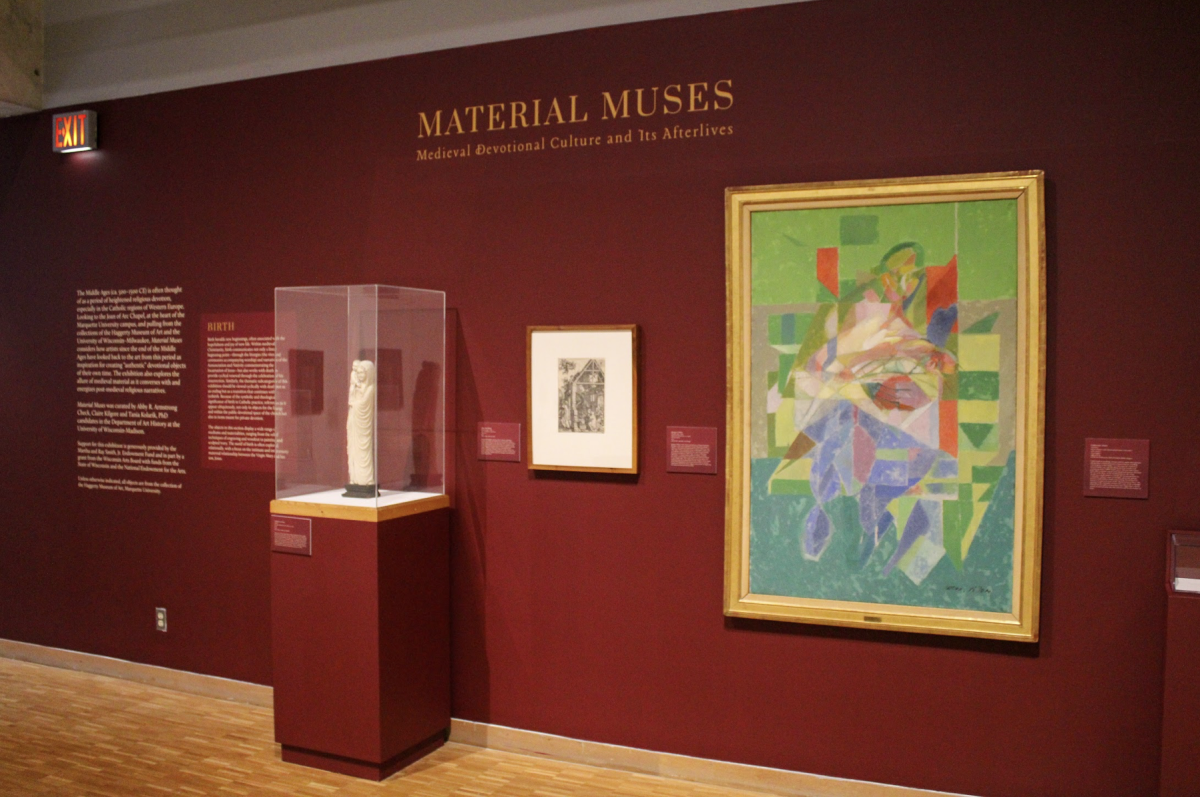
Street art is everywhere, especially in urban environments. Usually, spray paint is found on buildings, dumpsters and train cars, a permanent fixture until someone else paints over it. However, around the city of Milwaukee, there is something different about some of our graffiti.
It’s not paint at all — it’s mud.
The artist behind this unique, natural urban movement is Jesse Graves, a fourth-year student at the University of Wisconsin-Milwaukee who is pursuing a double major in Art Education and Jewelry & Metalsmithing. He uses mud to create stenciled images throughout Milwaukee that both advocate for the environment and are eco-friendly in and of themselves.
“I am interested in making street art because it is for the public and accessible to everyone,” said Graves.
Graves said he has been a “maker” and problem-solver his whole life, but began working with mud stencils when he took a printmaking class. For each assignment, students were asked to take their art out into the world to reach a larger audience. Mud stenciling was Graves’ way of doing just that.
“I began using mud as my stencil medium because I wanted to put environmentally conscious messages in public spaces without using toxic spray paint,” Graves said.
Once he has designed and created a stencil, Graves mixes soil and water together and combines it with a whisk to create mud about the same consistency as peanut butter. He then tapes a stencil up to a wall or the sidewalk and proceeds to dab mud onto it with a sponge.
“The medium that art is created with informs the content of it,” Graves said. “I am using earth, which is basic and sustaining, to offer ideas regarding how we can sustain ourselves.”
When the stencil is removed, it leaves behind a non-toxic image that will eventually wash away in the rain. The stencils are brilliant works of art which also raise questions about social and environmental consciousness.
Casey Lembke, a senior in the College of Arts & Sciences, said he likes how Graves’ medium does not contradict any of the messages that his artwork conveys.
“Street art usually consists of spray paint, which can be harmful to the environment,” said Lembke, “By using mud, a natural component, instead of spray paint, it will fall back to the earth and you can pick it up and use it again.”
Graves has created a stencil that speaks directly to this notion. He calls it “RRC” for reduce, reuse, compost. With this one, Graves is proposing a modification to the traditional three arrows of reduce, reuse, recycle.
“We could reduce the amount of garbage sent to landfills,” said Graves. “We could also reduce the amount of energy used for transporting and processing garbage significantly by simply starting a compost pile.”
Lembke said Graves’ “RRC” stencil is his favorite because of the powerful yet simple message that it sends.
“I put a lot of thought into my designs,” said Graves. “I stand behind all of them.”
Alice Williams, a junior in the College of Nursing, said she has a hard time deciding which stencil she likes best from Graves’ collection.
“So many of them have such incredible messages that I feel like I should be paying attention to all of them,” said Williams. “The pieces that he chooses to create are all thought provoking and creative.”
“Free” and “Eat Wild” are in the running for Williams’ favorite stencils. “Free” is the image of a bicycle with the word “free” on the front wheel, which Williams said she likes to interpret as representing a pollution free environment. “Eat Wild” depicts a wild dandelion with the text “eat wild” next to it.
“Wild food is all around us, even in urban environments,” said Graves. “Most just overlook it and disregard it as weeds and nuisances.”
Although the stencils characterize significant subjects, it is truly the medium that makes the art. Without the mud, the messages would likely not be as attention-grabbing or as compelling.
“The mud makes the art more special,” said Williams. “It’s not permanent, so you are lucky if you get to catch it while it is there.”
In addition to mud stenciling, there are many other forms of eco-friendly art that put an interesting spin on conventional street art. One example is known as reverse graffiti: An artist creates a stencil and washes dirt and soot off of a surface to create an image with the clean space.
In April 2008, British reverse graffiti artist Paul Curtis, also known as “Moose,” came to San Francisco and turned the dirt-covered walls of the highly traveled Broadway tunnel into a beautiful work of art. Using wooden stencils and a pressure washer, Curtis created an environmentally-friendly scene of trees, grass and flowers, sending another powerful message about the importance of the environment.
For more information about mud stencils, reverse graffiti or other eco-friendly art, check out mudstencils.com or reversegraffitiproject.com.




